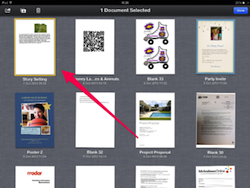I still find it hard to believe that the internet as we know it today was only created around 30 years ago in the 1990’s. It was only much later than this date did it start to become mainstream, with my own first experience of it in 1996 - and that was only at school. This is because it was still really expensive for your average person to have at home, our household certainly couldn’t afford it until some years later. The internet’s true potential was yet to be fully realised, however, and in such a short space of time, it has created (and destroyed) billion pound businesses in that small time frame.
TeachPitch, a website founded by a teacher for teachers to find the most relevant online learning content launched its solution TeachPitch for Schools earlier this month. The product is a digital resources management and discovery system, specifically designed for educational institutions.
All of Bright Tribe Academy Trust’s schools now have full access to Britannica Digital Learning’s online resources. Bright Tribe has been working closely with Britannica to ensure that all of their staff and students have access to Britannica School and Britannica ImageQuest as part of their learning initiative.
Education charity Into Film, in partnership with its main funder the British Film Institute (BFI), have launched Teaching Literacy Through Film, a new, free online course running from 25th January 2016. The MOOC (Massive Open Online Course) is the first of its kind in teaching literacy through film. Running over four weeks, the flexible course led by film education experts from the BFI and Into Film, and will examine the debate surrounding film as a vehicle for teaching literacy, alongside recent evidence demonstrating significant improvements in children’s reading and writing through use of film texts.
Technology and innovation is at the heart of Sandymoor School, a Microsoft globally recognised Showcase School in Runcorn, Cheshire. As a teacher of Computing at Sandymoor, I have always been interested in how the use of technology can be embedded within teaching and learning to create a 21st century learning design.
A new resource to help students to learn the early stages of phonic spelling, the Spellzone Starter Course is an entry-level resource aimed at older students who are still struggling with basic spelling concepts, Primary pupils, and lower level users of English such as ESL and EAL students.
Visible learning is not just about John Hattie. This is not to take away from Professor Hattie’s research, merely to say that creating visibility around student learning can redefine a learner’s understanding of the world. When in classes facilitating, I often open with the question “Do you know how many people in the world have access to the internet?” to which there are a myriad of guesses from the students. Very few get anywhere near the 3.1 billion internet users suggested by websites such as Internetlivestats.
In 2014, we saw the development and growth in adoption of online learning methods in both business and education. While the UK has been more reticent in implementing online learning programmes than the US, with the lift on student cap, British universities and schools will look for ways to become more international without juggling student capacity in order to compete – and online learning could be the answer. Beyond simply making documents available across devices, online learning or e-learning can ensure education is never compromised and becomes accessible whenever and wherever the student may be.
Collaboration between schools has recently been said to be the key to raising standards, with experts sharing good practice whilst learning from one another. Throw in an international element with two schools collaborating across the globe and you’ve got some pretty excited students and staff! How often do students in the UK get to meet, chat and dance for students on the other side of the world and then have the technology available to immediately judge and give feedback on these performances? Well that’s exactly what happened at Woodham Academy in County Durham and Merton Intermediate School in Wisconsin, America earlier this year; sharing good practice and resources, and collaborating on creative and innovative projects.

Pupils at South Cave CE Primary School have been collaborating on descriptive writing activities with teacher Mr Tatton. The classroom has no wi-fi connectivity. Each pupil had an iPad mini and used the new Airdrop feature in iOS 7 to share work with each other and to send finished content to the teacher's iPad for display.
The teacher shared a Pages document with each pupil's iPad using Airdrop. The pupils were able to open the document and followed the prompt, which was to select an image and begin to imagine and describe what it might like to be there. The pupils then shared their work with an agreed partner who provided feedback and improvements before the work was presented to the class in the form of a Tellagami animation.

A community-driven platform for showcasing the latest innovations and voices in schools
Pioneer House
North Road
Ellesmere Port
CH65 1AD
United Kingdom